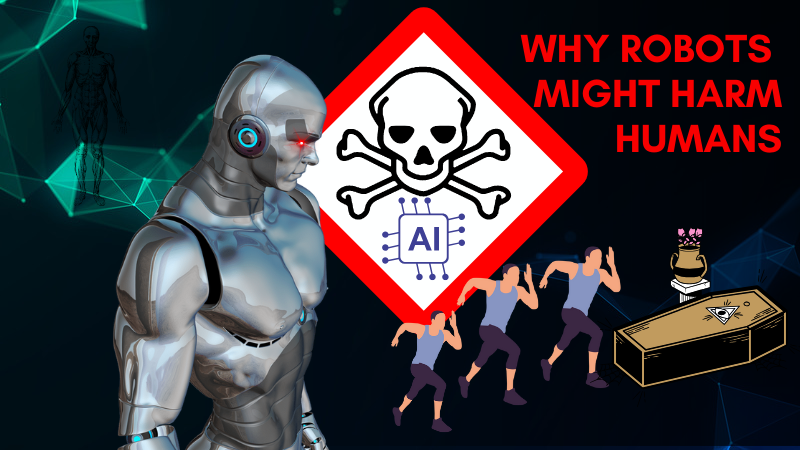Why Robots Might Harm Humans
Robots and AI systems are incredibly powerful tools, but they are not infallible. There are several reasons why robots might unintentionally or intentionally cause harm to humans:
1. Programming Errors
- Robots operate based on the code they are given. If there are bugs, oversights, or errors in their programming, they might behave unpredictably.
- Example: A robotic arm in a factory might miscalculate its movements and injure a worker nearby.
2. Misuse by Humans
- Robots can be weaponized or used for malicious purposes. For instance, autonomous drones or military robots could be programmed to harm people.
- Example: Cybercriminals could hack into a robot’s system and use it to cause damage or injury.
3. Lack of Ethical Safeguards
- If robots are designed without ethical guidelines, they might prioritize efficiency or完成任务 over human safety.
- Example: A delivery robot might prioritize speed over pedestrian safety, leading to accidents.
4. Unpredictable Environments
- Robots often struggle in complex, real-world environments where unexpected situations arise.
- Example: A self-driving car might misinterpret a rare traffic scenario, leading to a collision.
How to Prevent Robots from Harming Humans
To ensure robots and AI systems are safe, we need to implement robust safeguards and ethical principles:
1. Ethical Design
- Robots should be designed with human safety as the top priority. This includes:
- Asimov’s Laws of Robotics: A set of rules that prioritize human safety, such as “A robot may not injure a human being.”
- Fail-Safes: Mechanisms to shut down robots if they behave unpredictably or dangerously.
2. Human Oversight
- Robots should never operate entirely autonomously in high-risk situations. Human supervision is essential to intervene if something goes wrong.
- Example: A surgeon using a robotic assistant should always have the ability to override its actions.
3. Testing and Regulation
- Rigorous testing and government regulations are necessary to ensure robots are safe before they are deployed.
- Example: Self-driving cars should undergo extensive testing in various environments before being allowed on public roads.
4. Transparency
- AI decision-making processes should be transparent so humans can understand and intervene if necessary.
- Example: If a robot makes a decision, there should be a clear explanation of why it acted the way it did.
Examples of Harmful Scenarios
Here are some real-world examples of how robots and AI systems could cause harm:
1. Industrial Accidents
- A factory robot might malfunction due to a programming error, injuring a worker.
- Example: In 2015, a worker at a Volkswagen plant was killed by a robotic arm that mistakenly identified him as an object.
2. Autonomous Weapons
- Military robots or drones could cause harm if used irresponsibly or without proper oversight.
- Example: Autonomous drones used in warfare might mistakenly target civilians.
3. Self-Driving Cars
- Autonomous vehicles might misinterpret road conditions, leading to accidents.
- Example: In 2018, an Uber self-driving car struck and killed a pedestrian due to a failure in its object recognition system.
AI and Robots Are Tools
It’s important to remember that robots and AI are tools created by humans. Their actions are a reflection of how they are designed and used. The responsibility for preventing harm lies with:
- Developers: To create safe and ethical systems.
- Manufacturers: To ensure quality control and proper testing.
- Users: To operate robots responsibly and within their intended purpose.
The Role of AI in Preventing Harm
While AI and robots can pose risks, they can also help prevent harm:
- Recognizing and Avoiding Humans: AI can enable robots to detect and avoid humans in their environment.
- Safer Decision-Making: AI can process vast amounts of data to make safer, more informed decisions in real-time.
- Learning from Mistakes: AI systems can improve over time by learning from errors and adapting to new situations.
Robots and AI have the potential to revolutionize our world, but they also come with risks. By prioritizing ethical design, human oversight, and rigorous testing, we can minimize these risks and ensure that robots and AI systems are used for the benefit of humanity. The future of robotics is not about robots ruling the world—it’s about humans and machines working together to create a safer, smarter, and more efficient world.



